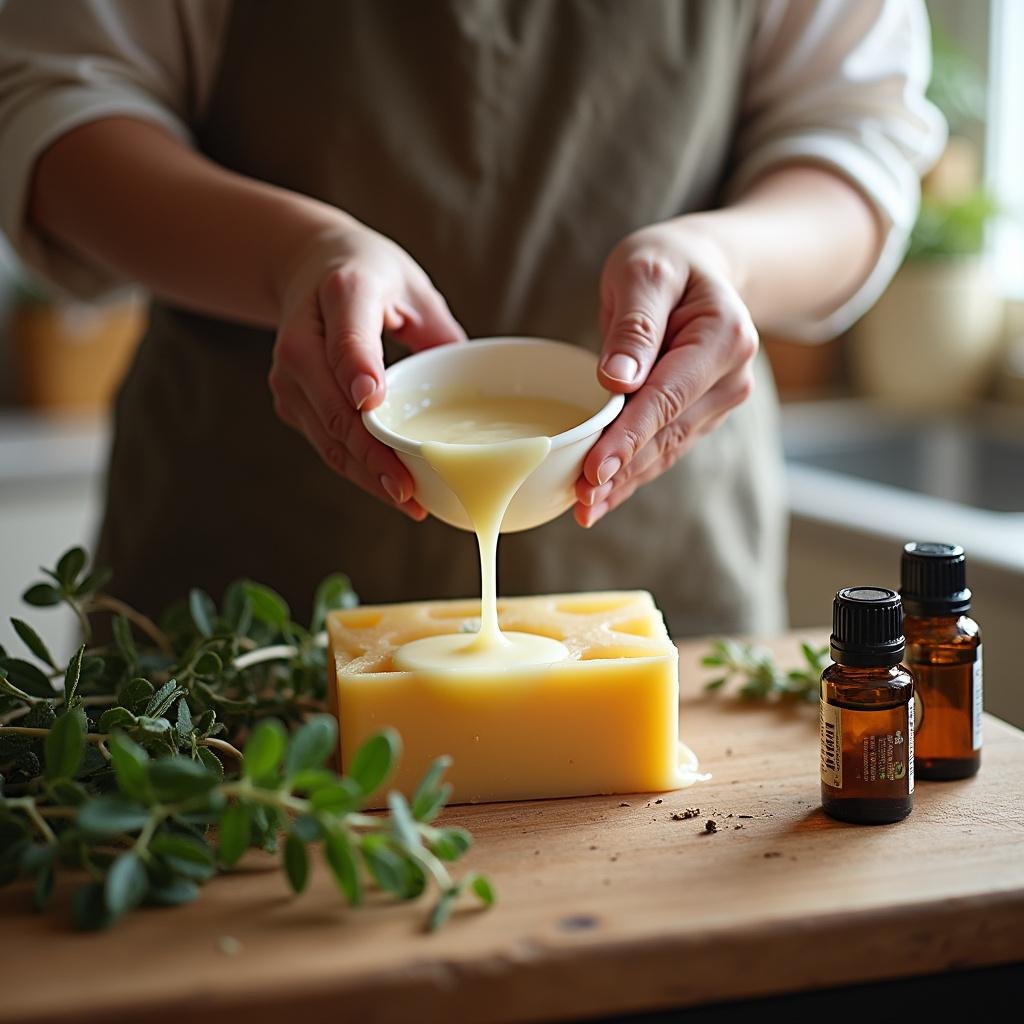1. Introduction
Creating your own homemade natural kitchen soap is not only a rewarding endeavor but also an eco-friendly way to transform your dishwashing routine into a safe and effective experience. With a few simple ingredients and straightforward techniques, you can craft high-quality, natural cleaning products from your pantry that are free from harsh chemicals and synthetic additives. This comprehensive guide on easy recipes for natural kitchen soap provides all the essential tips and step-by-step instructions to help you produce environmentally friendly cleaning essentials, reducing waste, safeguarding your skin, and protecting the planet. Whether you’re a beginner or a seasoned DIY enthusiast, mastering the art of homemade soap is both satisfying and practical.
2. Why Choose Natural Kitchen Soap?
Opting for DIY kitchen soap made from natural ingredients benefits your household and the environment significantly. Unlike commercial dishwashing detergents that often contain synthetic fragrances, dyes, and preservatives—some of which may cause skin irritation—home-crafted natural kitchen soaps allow you to have full control over what goes into your cleaning routine. Benefits of switching to homemade, environmentally friendly dish soap include:
- Gentle cleansing action that’s kind to your hands and skin
- Elimination of harmful chemicals and artificial fragrances
- Biodegradable and environmentally sustainable cleaning power
- Cost savings over time by utilizing common pantry ingredients
3. Essential Ingredients for Easy Natural Kitchen Soap Recipes
Developing your natural kitchen soap begins with gathering the right ingredients, which are both effective and easy to source. Incorporate these basic components for a versatile and effective soap:
- Castile soap: A versatile, plant-based soap base ideal for DIY projects, available at health stores or online. Consider supplementing with a high-quality Crock-Pot 7 Quart Oval Manual Slow Cooker to melt and mix your ingredients seamlessly.
- Essential oils: Natural fragrances like lavender, lemon, or tea tree not only add scent but also provide antibacterial benefits. For mixing your oils, a KitchenAid Classic Series 4.5 Quart Tilt-Head Stand Mixer can help blend ingredients smoothly.
- Herbs and botanicals: Rosemary, thyme, or mint bring natural scent and cleaning properties—perfect for enhancing your soap’s efficacy.
- Natural exfoliants: Oatmeal or coffee grounds serve as gentle abrasives to scrub and lift grime effectively.
- Vegetable oils: Olive or coconut oil adds moisture and nourishment, making your soap gentle and conditioning.
- Glycerin: A vital humectant that boosts lather and keeps hands moisturized, available from various online suppliers.
4. Step-by-Step Guide to Making Homemade Natural Kitchen Soap
Step 1: Prepare Your Workspace and Ingredients
Always start by setting up a clean, organized workspace. Protect surfaces with old newspapers or plastic sheets and wear gloves to prevent skin irritation. Measure each ingredient precisely—using a digital scale can increase consistency. To streamline your process, consider using a powerful appliance like the Ninja Blender, Mega Kitchen System for mixing and blending extracts or oils thoroughly.
Step 2: Melting and Mixing
Using a double boiler or a microwave-safe container, gently melt the castile soap or soap base until fluid. Incorporate a few drops of your preferred Ninja Air Fryer Pro 4-in-1 or similar kitchen gadget to facilitate even melting. Add essential oils and herbs at this stage to personalize your fragrance. Stir well to ensure all ingredients are evenly distributed. Incorporate glycerin and vegetable oils to enhance the soap’s moisturizing qualities, especially if you want a gentle touch for your hands.

Step 3: Pour into Molds and Let Harden
Carefully pour the warm mixture into silicone or plastic molds, ensuring no air bubbles are trapped. For an added touch, you might use TOSHIBA EM131A5C-BS Countertop Microwave Ovens to gently warm the molds for a smoother pour. Allow the soap to cool and solidify at room temperature, usually taking several hours or overnight for best results.
Step 4: Unmold and Cure
Gently remove the solidified soap from the molds. For stronger, longer-lasting soap bars, let them cure in a dry, well-ventilated place for about a week—this step enhances their hardness and aroma retention. During curing, your soap continues to develop, ensuring an optimal cleaning experience. Consider using a trusted Cuisinart Bread Maker Machine to help prepare ingredients or dry herbs used in your recipes.
5. Tips for Making Perfect Natural Kitchen Soap
- Utilize high-quality, organic ingredients for the best results and durability.
- Experiment with different combinations of herbs and essential oils to develop signature scents. A Clever Fox Recipe Book Spiral can inspire new ideas.
- Store your handmade soap in a dry, temperature-controlled environment to maintain quality and extend shelf life.
- Label your soap with the ingredients and production date for safety and future reference.
6. Frequently Asked Questions (FAQs)
Q1: Can I use store-bought soap to make natural kitchen soap?
Absolutely. Using unscented, pure castile soap or soap bases from stores ensures control over your ingredients, making it easier to customize your recipes. It’s a practical approach if you want quick results without sacrificing quality.
Q2: Are natural kitchen soaps as effective as commercial dish detergents?
Yes, especially when formulated with herbs, oils, and exfoliants. While they may require some adjustment in technique, you can achieve comparable cleaning power, all while avoiding harmful chemicals.
Q3: How long does homemade natural kitchen soap last?
Stored properly in a dry and cool place, your DIY soap can last several months. Proper curing and ingredient choice influence longevity significantly.
Q4: Are there safety precautions to observe?
Always handle hot mixtures carefully, work in a well-ventilated space, and keep ingredients out of reach of children and pets. Using protective gloves and eyewear is recommended when working with heated substances.
7. Conclusion
Embarking on the journey to craft easy recipes for natural kitchen soap is a sustainable, health-conscious choice that benefits your home environment and the planet. Thanks to simple ingredients, accessible tools, and clear instructions, you can create personalized, effective cleaning solutions that keep your hands safe and your kitchen eco-friendly. Start experimenting today, and experience the satisfaction of making your own natural kitchen soap—an essential step toward greener living and healthier homes!


